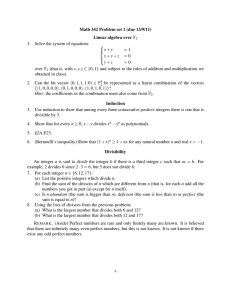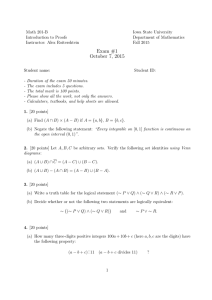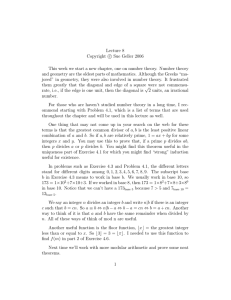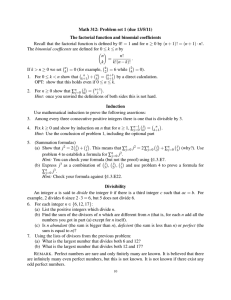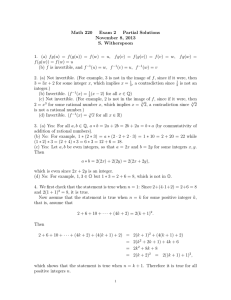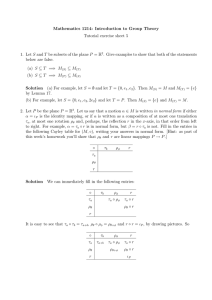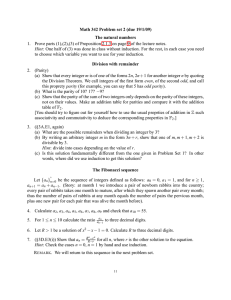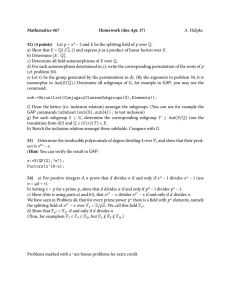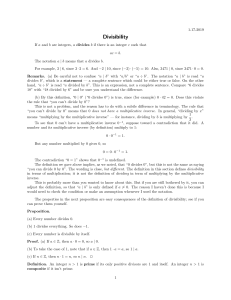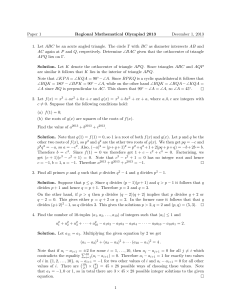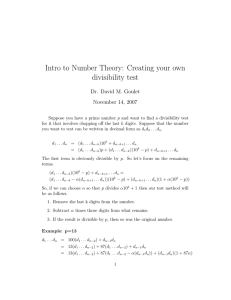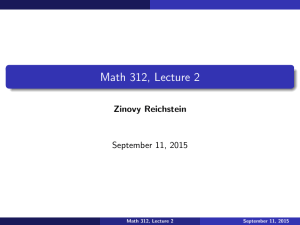Math 342 Problem set 1 (due 14/1/09) Linear algebra over F
advertisement
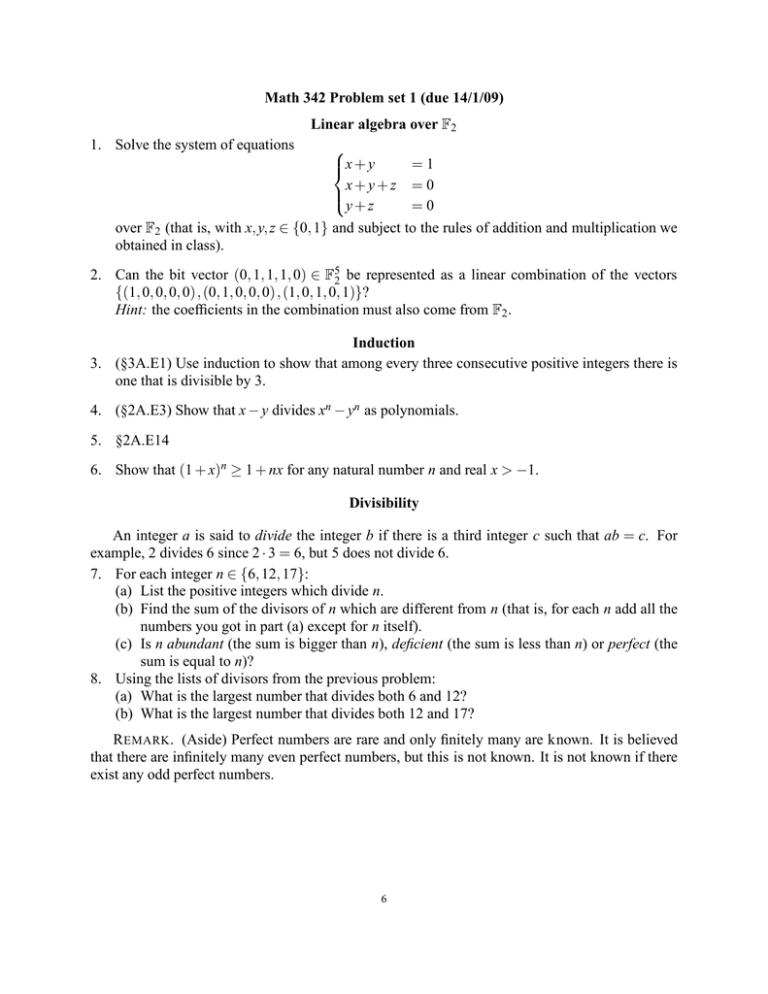
Math 342 Problem set 1 (due 14/1/09)
Linear algebra over F2
1. Solve the system of equations
=1
x + y
x+y+z = 0
y + z
=0
over F2 (that is, with x, y, z ∈ {0, 1} and subject to the rules of addition and multiplication we
obtained in class).
2. Can the bit vector (0, 1, 1, 1, 0) ∈ F52 be represented as a linear combination of the vectors
{(1, 0, 0, 0, 0), (0, 1, 0, 0, 0), (1, 0, 1, 0, 1)}?
Hint: the coefficients in the combination must also come from F2 .
Induction
3. (§3A.E1) Use induction to show that among every three consecutive positive integers there is
one that is divisible by 3.
4. (§2A.E3) Show that x − y divides xn − yn as polynomials.
5. §2A.E14
6. Show that (1 + x)n ≥ 1 + nx for any natural number n and real x > −1.
Divisibility
An integer a is said to divide the integer b if there is a third integer c such that ab = c. For
example, 2 divides 6 since 2 · 3 = 6, but 5 does not divide 6.
7. For each integer n ∈ {6, 12, 17}:
(a) List the positive integers which divide n.
(b) Find the sum of the divisors of n which are different from n (that is, for each n add all the
numbers you got in part (a) except for n itself).
(c) Is n abundant (the sum is bigger than n), deficient (the sum is less than n) or perfect (the
sum is equal to n)?
8. Using the lists of divisors from the previous problem:
(a) What is the largest number that divides both 6 and 12?
(b) What is the largest number that divides both 12 and 17?
R EMARK . (Aside) Perfect numbers are rare and only finitely many are known. It is believed
that there are infinitely many even perfect numbers, but this is not known. It is not known if there
exist any odd perfect numbers.
6
Problem set 0
1 0 1
1
1. Let A = 0 0 1 ∈ M3 (F2 ). Let v = 1 ∈ F32 .
0 1 1
0
(a) Calculate Av.
(b) Is A invertible? If so, find A−1 .
n+1
n
n
k
2. (§2A.E4) Show that 1−x
1−x = 1 + x + · · · + x = ∑k=0 x .
7
